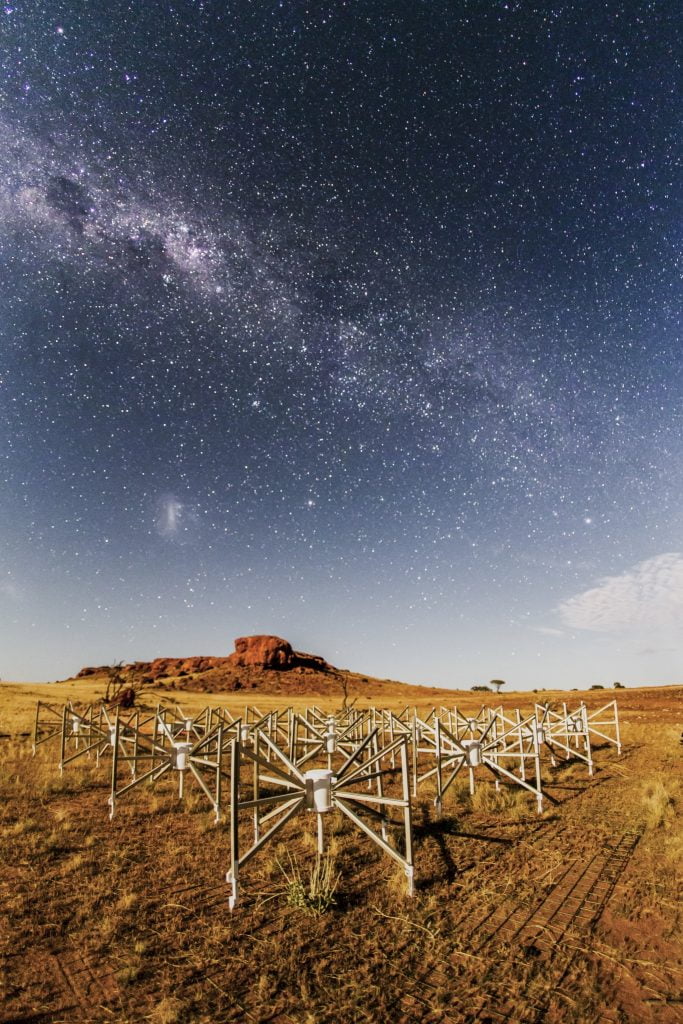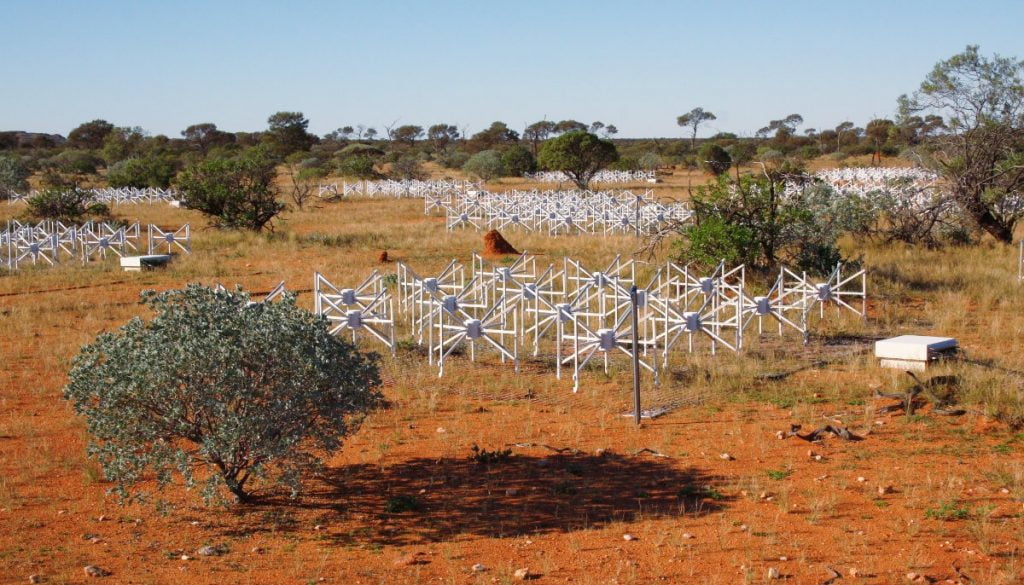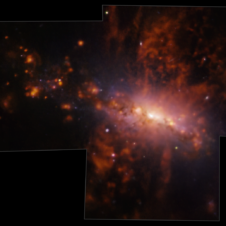Astronomers at the Curtin University node of the International Centre for Radio Astronomy Research (ICRAR) have teamed up with Adelaide company Silentium Defence to develop a passive radar for the surveillance of objects in space.
The team will use the super-sensitive Murchison Widefield Array (MWA) radio telescope to record radio waves bouncing off objects in Earth’s orbit. These objects can be 1000km away and travelling at up to 8km per second.
The signals recorded by the telescope are then processed to create a passive radar.
The technique is passive because the radio waves are generated by FM radio stations located around Australia, not from a radar transmitter.
Commercial FM broadcast signals are transmitted into Space and bounce off satellites and pieces of space junk. The Murchison Widefield Array (MWA) radio telescope can detect the reflected signals and image the orbits of these objects.
John Curtin Distinguished Professor Steven Tingay, from the Curtin University node of ICRAR, said FM radio station broadcasts are carried into space, as well as to car radios, and bounce off objects in orbit around the Earth.
“The reflected signals are received by the MWA, and we use them to track the objects,” Professor Tingay said.
“We can use the radio waves during both day and night, and when it is cloudy, so it can provide 24/7 surveillance in a way that other systems based on optical telescopes cannot.”
Surveillance is important to monitor valuable and strategic assets in space and to evaluate the risk of collisions that could destroy multi-billion dollar satellites, including satellites critical for communications.
The research team has won funding from the Commonwealth Government Defence Innovation Hub, as announced today by Minister for Defence Industry Christopher Pyne.
The MWA radio telescope is operated by an international consortium of 21 institutions and led by Curtin University.
It is a precursor to the $1B Square Kilometre Array and is located in the Murchison region of Western Australia.
The Murchison Widefield Array (MWA) is a low frequency radio telescope and is the first of four Square Kilometre Array (SKA) precursors to be completed. A consortium of partner institutions from seven countries (Australia, USA, India, New Zealand, Canada, Japan, and China) financed the development, construction, commissioning, and operations of the facility. The MWA consortium is led by Curtin University.
Silentium Defence are experts in passive radar techniques for defence and civilian applications.
Coupled with the capabilities of the MWA, the novel combination of industry and academia points to future space opportunities for Western Australia and the nation.
Silentium Defence chief executive Dr James Palmer said the collaboration between Silentium Defence and the ICRAR-Curtin University astronomers with the MWA showed great innovation.
“The development of space surveillance capability is a significant activity that Australia can offer to the global space industry,” Dr Palmer said.
WA Minister for Science, Innovation and ICT Dave Kelly said the collaboration, supported by both the State and Commonwealth Governments, showed the existing excellence of the space industry in Western Australia and how our investments toward the SKA are paying off outside astronomy.
“It is clear that WA will play a big role in the Australian Space Agency, currently in the planning stage,” Minister Kelly said.
Professor Tingay said radio astronomy in Western Australia has again shown that it has impact well outside of astronomy.
“Work like this lays the basis for a more diversified Western Australian economy, with the possibility to tap into the $US350 billion per year global space economy,” Professor Tingay said.
A time-lapse sequence of more than 1,000 images captured at the Murchison Radio-astronomy Observatory in Mid West WA. Tile 107, or “the Outlier” as it is known, is one of 128 original tiles of this SKA precursor instrument located 1.5km from the core of the telescope. Lighting the tile and the ancient landscape is the Moon.

Tile 107, or “the Outlier” as it is known, is one of 128 original tiles of this SKA precursor instrument located 1.5km from the core of the telescope. Lighting the tile and the ancient landscape is the Moon. Photographed by Pete Wheeler, ICRAR.

The Murchison Widefield Array (MWA) is a low frequency radio telescope and is the first of four Square Kilometre Array (SKA) precursors to be completed.
more INformation
The Murchison Widefield Array (MWA) is a low-frequency radio telescope and is the first of four Square Kilometre Array (SKA) precursors to be completed.
A consortium of partner institutions from seven countries (Australia, USA, India, New Zealand, Canada, Japan, and China) financed the development, construction, commissioning, and operations of the facility. The MWA consortium is led by Curtin University.
CONTACT INFORMATION
Professor Steven Tingay (ICRAR / Curtin University)
Ph: +61 401 103 635 E: Steven.Tingay@icrar.org
Lucien Wilkinson (Media Contact, Curtin University)
Ph: +61 401 103 683 E: Lucien.Wilkinson@curtin.edu.au
Pete Wheeler (Media Contact, ICRAR)
Ph: +61 410 549 023 E: Pete.Wheeler@icrar.org
Kate Hines (Media Contact, Silentium)
Ph: +61 413 070 925 E: Kate@aetherinsurance.com.au


